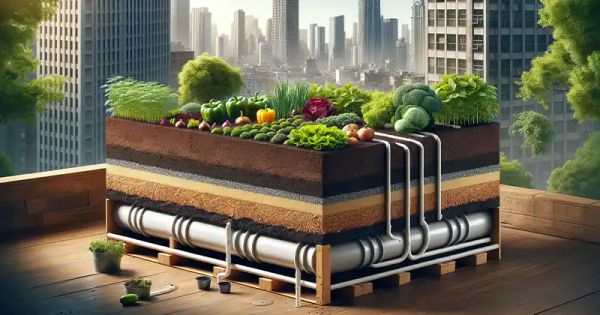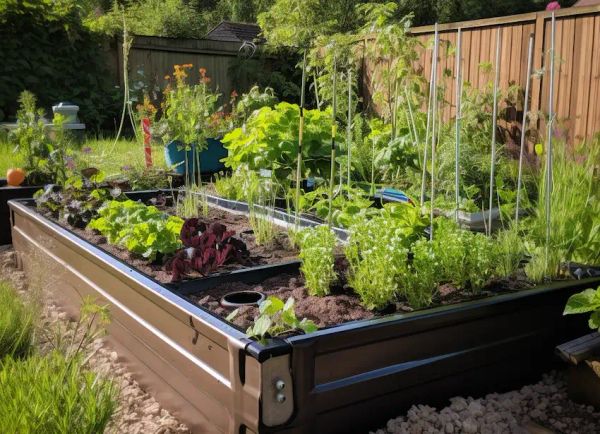In cities where green spaces are scarce and concrete dominates the landscape, the wicking bed offers a sustainable solution. It transforms limited areas into vibrant, productive gardens while conserving water, making it a champion in the fight against drought and water wastage.

The Wicking Bed: An Ingenious System
A wicking bed is like a self-watering raised garden. It’s designed to be incredibly water efficient by allowing plants to draw moisture from a built-in reservoir. This reduces the need for constant watering. The magic happens through capillary action, just like how a paper towel absorbs a spill. In this system, an ‘L’-shaped pipe evenly distributes water across the bed and rises above the soil, making it easy to fill and monitor the water levels.
Crafting Your Own Garden Marvel
To create a wicking bed like the one shown in the photo, follow these instructions to ensure the water distribution system works effectively:
Select the Right Container: Start with a sturdy container that can hold a significant amount of soil and has space for a water reservoir beneath. A custom wooden frame, an old bathtub, or a repurposed large planter are all excellent options for your wicking bed.
Seal the Deal: Line your chosen container with a high-quality waterproof membrane to create the water reservoir. Make sure it’s completely sealed to avoid any leaks.
Install the ‘L’-Shaped Pipe: Lay a PVC pipe along the length of the bed on top of the aggregate. The pipe should have perforations along the horizontal section to ensure even water distribution. At one end, the pipe bends upwards, extending above the bed’s height to serve as the fill point.
Aggregate Layer: Fill the bottom of the container with a layer of coarse aggregate, such as gravel, and ensure it’s level. This is where the water will be stored.
Geotextile Barrier: Cover the aggregate and the horizontal part of the pipe with a geotextile fabric. This will prevent soil from washing into the reservoir while allowing water to move upwards.
Add Soil: Pour a nutrient-rich soil mix on top of the fabric. The soil should be suitable for the plants you want to grow, whether it’s vegetables, herbs, or flowers.
Overflow Outlet: Install an overflow valve or pipe where the soil meets the aggregate. This is crucial for preventing waterlogging by allowing excess water to escape.
Plant and Mulch: Plant your seeds or seedlings into the bed and cover the surface with organic mulch to minimize evaporation.
Water and Watch: Fill the reservoir via the vertical pipe until water begins to overflow. Then, sit back and observe as your plants draw up water from below, thriving with minimal maintenance.

This wicking bed design is a step towards self-sufficiency and resilience in urban gardening. By embracing this method, you’re committing to a sustainable future where resource conservation and green living take root in our cities.




